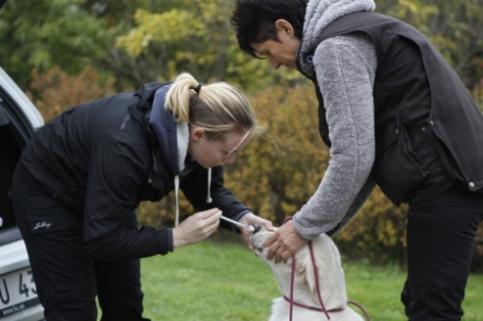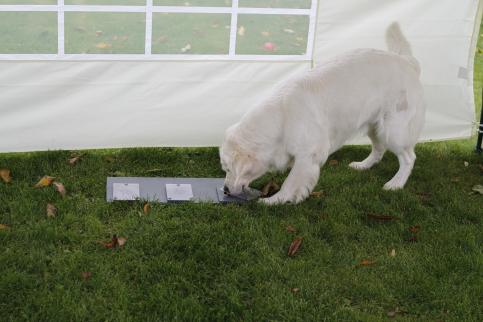In total 61 Golden retrievers underwent behavioural testing and from each dog a buccal swab was taken for DNA analysis.
The dogs were tested on two different occasions, allocated into two groups. One group received oxytocin on their first visit and a control on their second visit while the opposite was true for the second group. Dogs received 20 IU of oxytocin, diluted in 0.4 millilitres of phosphate-buffered saline (PBS) half a dose in each nostril. During the control treatment, dogs received 0.4 millilitres of PBS, also with half a dose per nostril. Treatments were delivered through an intranasal spraying devise (LMA MAD300).
All subjects participated in the problem-solving task twice. The test device consisted of three plates on a solid PVC slab. The plates were each covered by a transparent Plexiglas lid with six 0.5 mm odour ports. The side plates are only screwed on the top, making it possible to slide the lids open to access the treat. However, the middle plate is tightly fastened by three screws, making it impossible to open (the unsolvable part). One piece of Frolic, broken in four equal parts, was placed in each pit.
Videos were analysed and behaviours were scored using The Observer XT 10 software. For each dog the frequency, latency and duration of looking at the owner and the experimenter and physical contact made with the owner and experimenter were recorded.


Responsible for this page:
Director of undergraduate studies Biology
Last updated:
07/27/16
